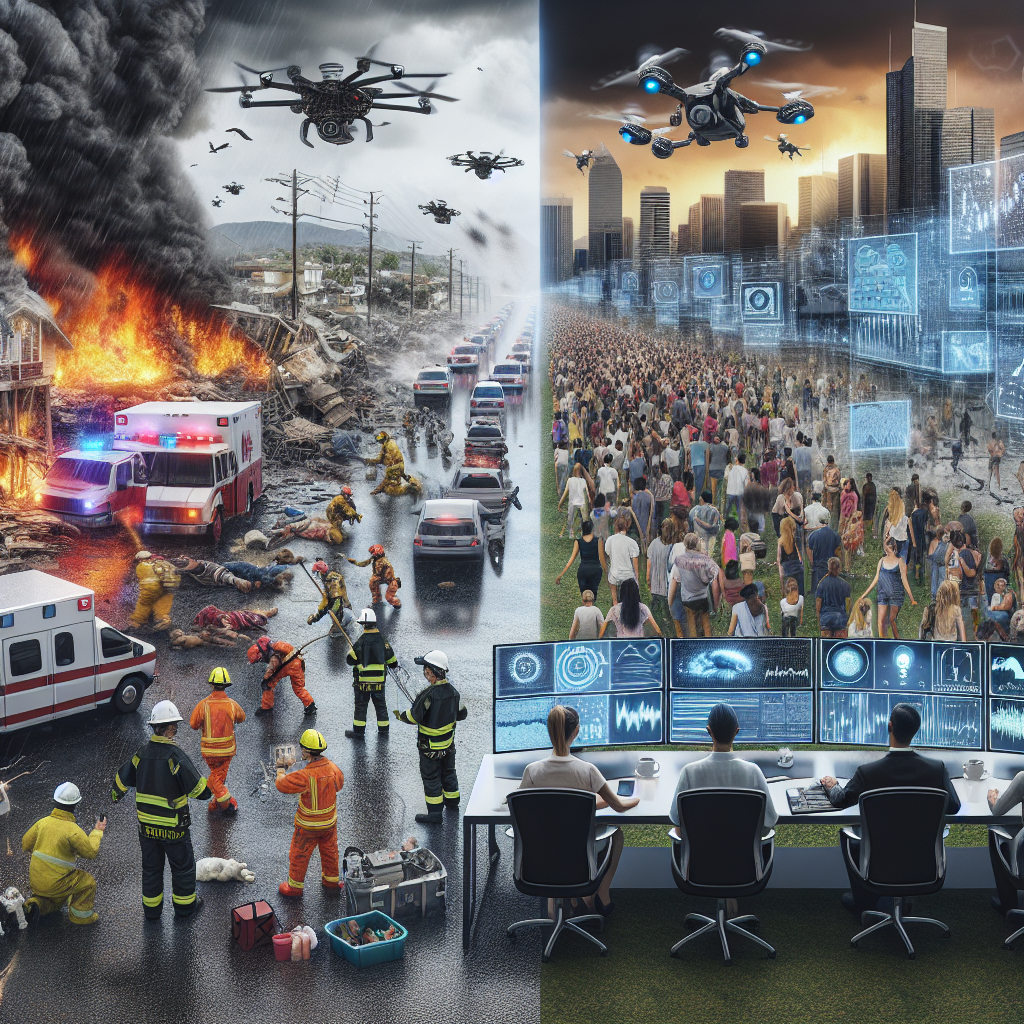In recent years, artificial intelligence (AI) platforms have been revolutionizing disaster response efforts across the globe. These advanced technologies have the ability to analyze large amounts of data, predict outcomes, and provide real-time insights to help emergency responders make critical decisions more efficiently. From predicting the path of a hurricane to identifying areas in need of assistance after a natural disaster, AI platforms are proving to be invaluable tools in the field of disaster response.
One of the key ways in which AI platforms are revolutionizing disaster response is through the use of predictive analytics. By analyzing historical data and real-time information, AI algorithms can predict the path and intensity of natural disasters such as hurricanes, earthquakes, and wildfires. This allows emergency responders to better prepare for the event and allocate resources more effectively. For example, during a hurricane, AI platforms can predict where the storm will make landfall and how severe the damage will be, allowing officials to evacuate residents and deploy resources to the most affected areas.
Another way in which AI platforms are transforming disaster response is through the use of image recognition technology. In the aftermath of a natural disaster, it can be difficult for emergency responders to assess the extent of the damage and identify areas in need of assistance. AI platforms equipped with image recognition technology can analyze satellite images and aerial photographs to quickly identify damaged buildings, roads, and infrastructure. This allows responders to prioritize their efforts and provide aid to those most in need.
Furthermore, AI platforms are also being used to analyze social media data to gather real-time information about the impact of a disaster. By monitoring social media posts, AI algorithms can identify areas where people are in need of help, track the spread of misinformation, and assess the overall sentiment of the affected population. This information can be used to guide response efforts, communicate with the public, and coordinate rescue operations more effectively.
In addition to predictive analytics, image recognition, and social media monitoring, AI platforms are also being used to automate certain tasks in disaster response. For example, drones equipped with AI algorithms can be deployed to assess damage in hard-to-reach areas, deliver supplies to remote locations, and even assist in search and rescue operations. This not only speeds up the response time but also reduces the risk to human responders in dangerous situations.
Overall, AI platforms are revolutionizing disaster response by providing emergency responders with the tools they need to make faster, more informed decisions. By analyzing data, predicting outcomes, and automating certain tasks, AI technologies are helping to save lives, protect property, and mitigate the impact of natural disasters on communities around the world.
FAQs:
Q: How are AI platforms able to predict the path of natural disasters?
A: AI platforms use predictive analytics to analyze historical data, real-time information, and weather patterns to predict the path and intensity of natural disasters such as hurricanes, earthquakes, and wildfires.
Q: How are AI platforms able to identify areas in need of assistance after a natural disaster?
A: AI platforms equipped with image recognition technology can analyze satellite images and aerial photographs to quickly identify damaged buildings, roads, and infrastructure in the aftermath of a natural disaster.
Q: How are AI platforms able to analyze social media data to gather real-time information about the impact of a disaster?
A: AI algorithms can monitor social media posts to identify areas where people are in need of help, track the spread of misinformation, and assess the overall sentiment of the affected population in the aftermath of a disaster.
Q: How are AI platforms able to automate tasks in disaster response?
A: Drones equipped with AI algorithms can be deployed to assess damage, deliver supplies, and assist in search and rescue operations in hard-to-reach areas, reducing the risk to human responders and speeding up the response time.

